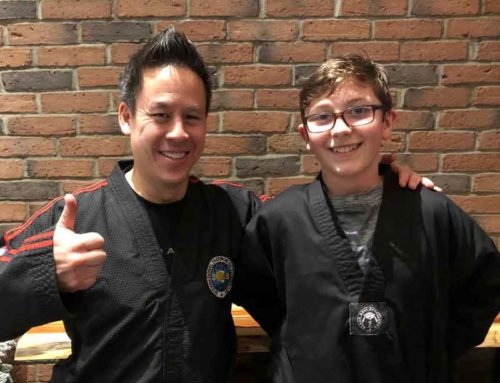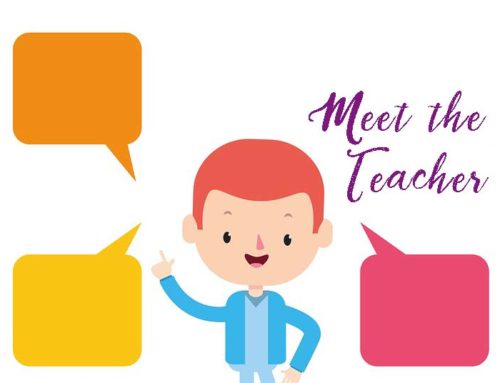As a teacher with 25 years experience and a parent with 13 years experience, here is what I’ve learned about making kids listen. Listening is a habit. You have to make that habit automatic and routine. You want your kids to comply to your requests because it is second nature. So, how do we make listening and complying habits? Here are a 6 tips taken from my book, “You’ve Got This, Mom! A Mother’s Guide to Surviving and Thriving in Today’s Modern World.

1. Tell them what you want them to do
If you want them to do something, tell them what you want them to do – not what you don’t want them to do. For example: say “Eat your dinner” instead of “Stop pushing your food around your plate;” say “Come home before 7” instead of “Don’t stay out too late.” If you don’t tell them what it is you want them to do, they can’t do it. If you want them to do what you want, they have to be clear of your expectation.
2. Set high expectations
Whatever expectations you set, those are the expectations that will be met. Children will always gear themselves to do at least the minimum you expect either because they don’t feel like doing more, or because they believe they can do what you expect of them. Some children will only do the minimum, so you need to know your limits and your comfort zone. What are you willing to accept and what are the minimum conditions you need to be satisfied that things are running smoothly? At home, I set expectations by my example. This is how we do things in our home: we talk respectfully, we help out, we eat meals together using our technology only to advance conversation, not to interrupt it. That’s just the way we do things.
3. Say what you do and do what you say
There will be times when you have to be the parent. Not the friend. Not the good guy. Not the enabler. If you want them to learn to be caring, thoughtful, independent children, there are going to be times when you have to draw the line. I hate drawing the line. I don’t like conflict and that line makes me feel like there’s conflict coming. But, I know there are situations when I have to draw it all the same. Kids are being kids, and sometimes what they are doing isn’t caring or thoughtful because they are focusing on what they are doing, on the fun they are having, and not on how it’s inconveniencing or hurting others. Line drawing time: when this happens, you have to set the expectations, and insist on them living up to those expectations.
If you decide they can meet your expectations, and you decide to set those expectations, children have to know you mean what you say. So, if they don’t comply when you know they can, you may have to back up what you say. “You need to … or I will have to…” Oh, and make sure you mean what you say because you’re going to have to back it up with action. Otherwise, whatever you say becomes meaningless, and your talk becomes background noise. (Please understand, if we are talking about children who don’t have the skills to comply, those skills need to be addressed first.)
4. Don’t give them a choice
Choice is for when you want them to choose one of two options; choice is not for use as a threat. Do you want peas or green beans? Do you want to have your shower before or after breakfast? These are choices that are assuming both options are acceptable to you. If both options are not acceptable, don’t give them as a choice. For example, you say, “If you don’t put your coat on, you won’t get to play outside.” Your child thinks you’re giving them a choice and thinks, “OK, I’ll play inside.” Instead of giving the choice, be clear in your expectation and say, “Get your coat on.”
5. Counting 1- 2- 3 Magic
Don’t ask me what it is about the counting. There’s a book about it, there’s a whole program about it, if you need to know. I just know it works if you start counting right away and keep to the three. Keep it simple. The first time you do it, plan to do it. Make sure you have nothing else pressing happening. Make sure you are ready for a possible meltdown. And, stay strong because that’s the only way it’s going to work. Be clear with yourself that the real issue is not what you’re asking them to do, but that you are establishing a habit that they will listen to you and do what you ask.
Here’s how it works: “Please put your iPad away.” No reaction? What does that mean for you? It means you want to restate your request and count, but you want to count calmly. Like it doesn’t matter to you and like you know they will do it. Act the part! You want to count slowly and deliberately, so they have enough time to react: 1 (deep breath, exhale) 2 (deep breath, exhale) and (no 2 and a half and three quarters – straight to)…3. Darn. That iPad is still out. Who saw that coming? Now what? Now, you calmly take that iPad away and put it out of reach but within sight, and you say, “Next time, I ask you to do something, please do it.”
But, this is hard!
If that wasn’t hard enough, this is the even harder part: you walk away. If this is the first time you’ve ever done this, you may experience crying (hopefully, only your own!) and acting out. You may experience some pleading (other than what’s happening in your head between you and God). You may experience some disbelief (other than, “I can’t believe I’m doing this. This is going to work. Right?”) Leave that iPad exactly where it is and do not respond. If you reverse your decision, you will have to play out the whole scenario again another time and it will only be worse because they won’t believe you. A short time later, when the iPad is forgotten, out of nowhere, you say “Hey, wanna play on the iPad with me? Will you remember to put it away when I ask? Great. Let’s do it.”
Follow-up
If all goes well, you will only ever have to go through the whole process once, although some children will test you a few times especially if they are in the habit of not listening or of not complying. Having said that, after the first time, I repeated the process often and deliberately to create the listening and complying habit. At first several times a day: Please put away your toys. Please come to dinner. Please wash your hands. All day, I asked. And, any time there was hesitation, I started to count. A habit was forming: the habit of paying attention and complying. I only had to get to 3 the once, but I always had in mind what I would have to do in case I got to 3. Over a period of a few weeks, I counted less frequently, and eventually, I didn’t have to count. Even still, years later, every once in awhile, I engineer a situation where I have to count, just so we all remember what it’s about.
6. Establish routine
Children need to know what to expect. Routines help them to make order of their world and to understand how things work. Having routines makes them feel safe, loved and cared for. Ironically, generally speaking, the children who need the routines the most are the ones who don’t have them. The children who display challenging behaviour need the routine, they need the consistency. If their routines are affected, they don’t know how to cope, so they display behaviours to show they are in distress. They can’t calm down on their own and if you don’t help them calm down, they can get out of control. How do you think they are feeling at this point? Frustrated, alone, afraid. They don’t know how to calm down by themselves and nobody cares enough to help them. How is this loving? They need a good strong hug: comforting arms around them reassuring them that you’ve got this.
Some kids need more training than others, and if they don’t know how to react or how to cope, you can come up against some challenging behaviour. Whether at school or at home, these gaps in skills need to be addressed not because the behaviours are disrupting the harmony, but because children need these skills to get along and to interact appropriately. In his book, Lost at School, Ross Greene, PhD. discusses Collaborative Problem Solving as a means of helping these children to develop the skills they need to reduce the challenging behaviour. Teachers and students work together to identify concerns and obstacles and to find solutions that are realistic and mutually satisfactory. Parents and their children can also benefit from this collaborative problem solving.
For more information about helping your kids become independent, visit my blog at antoniacetin.com or purchase a copy of my book, “You’ve Got This, Mom! A Mother’s Guide to Surviving and Thriving in Today’s Modern World.”





